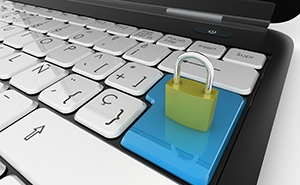Summertime means the 2020 tax filing season is firmly in the rearview mirror for millions of Americans!
This year, summer also means more money for you thanks to the child tax credit advance payments. Find out what you need to know about these payments in this month’s newsletter.
Also read about how to maximize your vehicle expense deduction if you’re a business owner, several things to consider when looking for your next banking relationship, and how to protect your privacy from companies spying on your every move.
Please call if you would like to discuss how this information could impact your situation. If you know someone who could benefit from this newsletter, feel free to send it to them.
Get Your Child Tax Credit Payments NOW!

The first advance payment from the newly expanded child tax credit was recently sent out by the IRS. Payments are scheduled to be made on the 15th of each month through December.
Here’s what you need to know about the child tax credit and the advance payments.
Background
For the 2021 tax year, an expanded child tax credit reduces your tax bill by $3,600 if you have a qualifying child that’s age 5 or under, or by $3,000 if you have a qualifying child from age 6 to 17.
If the total amount of the child tax credit for your family exceeds the total taxes you owe, you’ll receive the amount of the credit as a refund.
Child tax credit advance payments
Instead of waiting to file your tax return to receive the entire amount of your child tax credit, the IRS is directed by Congress to send 50% of the credit to you in six monthly payments beginning in July 2021.
For example, say you have three kids, ages 10, 12 and 16. Also assume your income is not too high and your children meet the IRS definition of a qualifying child. Instead of waiting until 2022 when you file your 2021 tax return to receive the entire $9,000 child tax credit, you can get paid half of the child tax credit amount, or $4,500, in 2021.
The advance payments began July 15 and continue for six months until December 15. The family in this example would receive six payments of $750 starting July 15, for a total of $4,500.
What you need to know
The monthly payments are automatic. You’ll automatically receive advance payments if:
- You filed a 2019 or 2020 tax return and claimed the credit, OR
- You gave information in 2020 to receive the Economic Impact Payment using the IRS non-filer tool, AND
- The IRS thinks you are eligible, AND
- You did not opt-out of the early payments.
Register with the IRS. If you didn’t file a 2019 or 2020 tax return but are otherwise eligible for the child tax credit, you’ll need to register with the IRS to receive the child tax credit. Click here to visit the IRS website to find out if you need to register.
Consider if you should opt out of the advance payments. Getting half of your child tax credit ahead of time may not be the right move for everyone. For example, if your 2021 income ends up higher than expected, you may need to pay back the advance payments when you file your tax return. To opt out, click here to visit the IRS’s child tax credit update portal.
Make the Most of Your Vehicle Expense Deduction

Tracking your miles whenever you drive somewhere for your business can get pretty tedious, but remember that properly tracking your vehicle expenses and miles driven can lead to a significant reduction in your taxes.
Here are some tips to make the most of your vehicle expense deduction.
- Keep track of both mileage and actual expenses. The IRS generally lets you use one of two different methods to track vehicle expenses – the standard mileage rate method or the actual expense method. One year the mileage method may result in a higher deduction, while the actual expense method may be higher in a subsequent year. But you won’t know which method results in a higher deduction unless you track both your mileage and actual expenses.
- Consider using standard mileage the first year a vehicle is in service. If you use standard mileage the first year your car is placed in service, you can then choose which expense tracking method to use in subsequent years. If you initially use the actual expense method the first year your car is placed in service, you’re locked in to using actual expenses for the duration of using that car in your business. For a car you lease, you must use the standard mileage rate method for the entire lease period (including renewals) if you choose the standard mileage rate the first year.
- Don’t forget about depreciation! Depreciation can significantly increase your deduction if you use the actual expense method. For heavy SUVs, trucks, and vans with a manufacturer’s gross vehicle weight rating above 6,000 pounds, 100% bonus depreciation is available through the end of the 2022 tax year if the vehicle is used more than 50% for business purposes. Regular depreciation is available for vehicles under 6,000 pounds with annual limits applied.
- Don’t slack on recordkeeping. The IRS mandates that you track your vehicle expenses as they happen (this is called contemporaneous recordkeeping). You’re not allowed to wait until right before filing your tax return to compile all the necessary information needed to claim a vehicle deduction. Whether it’s a physical notebook you stick in your glove compartment or a mobile phone app, pick a method to track your mileage and actual expenses that’s most convenient for you.
Please call if you have any questions about maximizing your business’s vehicle expense deduction.
The creepy spying game of the internet

Companies are following your every move. When you have a cell phone, they are tracking what apps you use, where you go, who you talk to and more! Other smart devices listen to your conversations in your home, keep track of what you view on your TV, and report where you visit and what routes you take to get there. Even worse, the more you share the greater the chance a hacker gets this information.
Consider these tips to more actively protect yourself and your information.
The power of the opt out
Apple recently introduced an opt out feature on their iPhones. Historically, when you download a new app onto an iPhone, you have to manually opt out of sharing your device’s data. Now when you download a new app on your iPhone, you’ll be asked whether you want to opt in and allow the app to have access to your information.
So if you are an iPhone user, start with the opt out and then deliberately select who you wish to give access to your information. And opt out does not have to be global. For instance, a direction function needs your location when you use it. But it does not need to be turned on all the time.
Actions:
- Leave opt-out as default on iPhones and set default to opt-out on other mobile phone brands.
- Review all apps and turn off tracking and data sharing.
- Actively turn off your phone if you do not wish to be tracked.
- Review all smart devices and select your opt out options. Include TVs and personal assistants in your review.
Protect your web browsing
Companies love to keep tabs on your browsing habits. And it is not just limited to their own sites. They might spy on ALL your activity. They see every website you visit, monitor all your clicks, and track all social media likes and videos you view. They then use this information to determine what you see and read. In short, they control your world view, both in content and in what ads you see.
Actions:
- Actively use ad blockers such as AdBlock and uBlock.
- Turn off cookies and periodically empty your cache.
- Avoid downloading any and all extensions unless absolutely required.
Use best data protection practices
As the internet and smart devices evolve, so do the thieves that wish to steal your identity and your financial resources. So keep up-to-date on best data protection practices.
Actions:
- Vary passwords and user IDs. Keep track of them outside of your computer.
- Keep operating systems and software up-to-date.
- Encrypt your emails and computer hard drive.
- Keep banking information off your cell phone.
- Back up all your devices remotely.
- Use current antivirus software.
- Monitor your credit reports for any suspicious activity.
- Confirm before opening suspicious emails or attachments.
Most importantly, stay informed. In the end, the burden of protecting your data always falls on you.
Get the Best Bank for Your Buck

A checking account at one bank is the same as a checking account at another bank, right? Well, maybe not. In fact, according to the J.D. Power 2021 U.S. Retail Banking Satisfaction Study, now 41% of people do all their banking online. This is a pretty big shift from traditional banking.
After reviewing the financial strength of a bank, here are several other things to consider as you decide what’s really most important to you in selecting a bank.
The online bank versus nearby location
While having a nearby brick and mortar location is important to many banking consumers, you might find better interest rates with an online-only bank because they don’t spend lots of money to maintain physical branches. As people switch to taking care of all their basic banking transactions online, one of the reasons to visit your local bank branch is to talk with a banker. If you believe you’d benefit from such discussion, make sure the online bank you’re considering will facilitate that for you.
Understand key bank fees
In addition to charging loan fees when they lend out money, banks bring in much of their revenue by charging fees on your deposit accounts. You’ll have a much more positive experience by ensuring your bank’s fees don’t outweigh the benefits of the account you’re considering. Here are three key fees to understand:
- Monthly maintenance fees. This is a monthly fee a bank charges on an account. Understand how yours works. Banks will waive these fees if your account is above a certain balance. Others waive the fees if you behave in a way they want you to behave. For instance, if you use a debit card versus writing a paper check. Others want you to make direct deposits. Still others want you to use their bill pay service. Understand this fee class and determine if you can abide by the terms your bank sets for them.
- Overdraft fees. These fees are charged to a checking account if you attempt to buy something but don’t have enough money in your account. There are a variety of ways to avoid overdraft fees, such as signing up for a protection program or linking your savings account to automatically pay the rest of the bill. Take the time to understand your bank’s options to avoid overdrafts and the cost associated with them.
- ATM fees. Some ATMs require you to pay money to use their machines, especially if the ATM you’re using isn’t in your bank’s network. Don’t overlook the opportunity to save money by ensuring that the bank you’re considering supplies ATMs in your area so you won’t have to pay a fee every time you need to use an ATM.
Other banking tools
Banks often provide tools to help you budget your daily and monthly expenses. Many offer free credit scores and credit monitoring. Others offer automatic transfers into a savings account. Still others offer the ability to open multiple savings accounts and label each account for different purposes.
Keep these tips in mind the next time you need to choose a new bank. With many different banks to choose from, a little research can ensure the bank you choose fits your financial needs and priorities.
